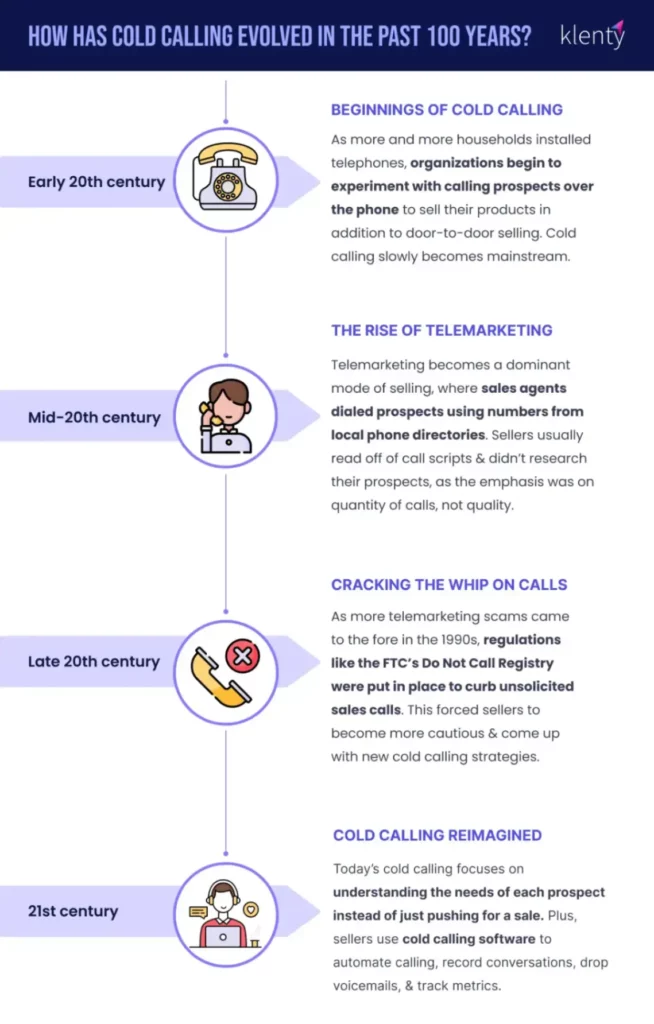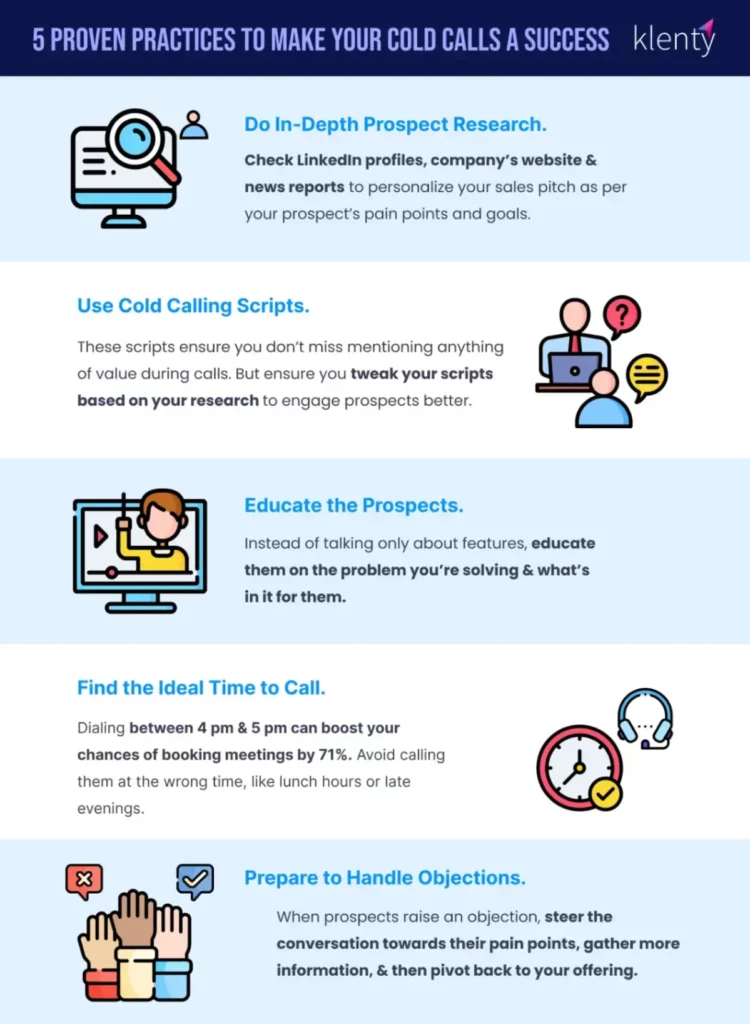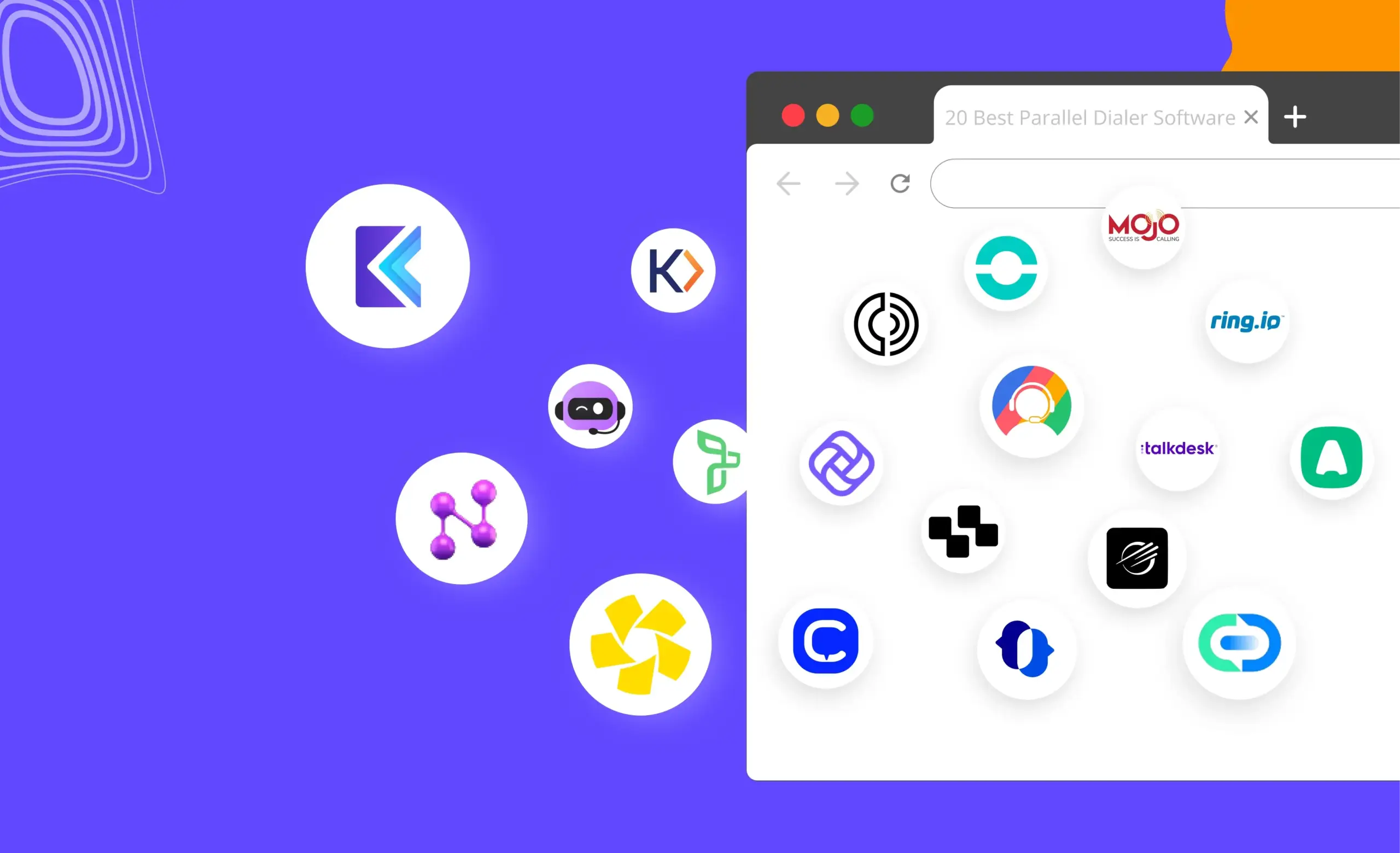Is cold calling dead? Yes and no.
The best way to describe this would be to take the example of Schrödinger's cat. According to this thought experiment conducted by the Austrian physicist Erwin Schrödinger, when you put a cat in a box with a vial of poison, it is both alive and dead. Why? Because there is no way of knowing which is the case unless you open the box and check on the cat.
Similarly, there’s no definitive answer to “Is cold calling dead?” You see, with data privacy laws becoming more stringent that cracks down on unsolicited cold calling, and the overall bad reputation that this sales outreach method has garnered over the years, it may seem like cold calling has taken its last breath. And to be fair, its traditional form may have.
But to say the concept of cold calling is history wouldn’t be right either.
So, what’s the status update? That’s what we’re about to jump into. Here, we discuss how cold calling services have metamorphosed to the present sophisticated form and equip you with 5 actionable tips to drive your sales outreach success.
How Cold Calling Has Evolved from Then to Now

If there was a history book specially for SDRs, it would dedicate a whole chapter on the 19th century. You won’t read anything about wars and politics, but about Alexander Graham Bell inventing the telephone and John H. Patterson’s ingenious system for sales management.
Because, frankly, the combination of the two could be said to be a watershed moment for sales outreach. Let’s see how this happened.
In the late 19th century and early 20th century, telephones were all the rage. Something like iPhones are today. Translation: those who could afford it had it.
Around the same time, Patterson, who founded the National Cash Register, pioneered his sales training method that included sales scripts, quotas, and commissions, all of which had a great impact on modern selling. His NCR Primer that he used to train his sales team describes the 4 steps of a sale—approach, proposition, demonstration, and close—from which the current sales process evolved.
As more households began installing telephones in the mid-20th century, newly-trained salespeople found an opportunity (like they always do). Now, salespeople wouldn’t need to get on the bus, knock on doors, get greeted by skeptical faces, and then stand like the uninvited guests they were on the porch until the prospect decided how they felt about them. No, none of that.
This was all replaced with simply dialing a telephone call, which not only proved to be much less tiring for the salesperson but was also far less intrusive for prospects. And that’s how cold calling came to be.
Genius for the time. Genius enough for it to have become the dominant sales technique by the time the 20th century came to a close. However, this is where it gets a little bumpy.
You could say this was an Icarus moment. Just like Icarus flew too close to the sun with his wax wings, salespeople dialed too many calls without doing their research. Couple this with aggressive cold callers, fraudsters, and scam agents, and you’d know why cold call efforts started getting regulated during the early 20th century.
Most would think this might be the end of cold calling. But it turns out it was just a speed bump that eventually went on to encourage a more responsible and efficient form of cold calling.
You see, cold calling today is nowhere close to how it was a hundred years ago.
At the time, salespeople would simply dial numbers and make their pitch. That is to say, they didn’t take the time to study their prospects, pain points, motivations or goals. They would simply pitch their offering relentlessly until the prospect yielded and made the deal or slammed the receiver down.
Fast forward to today, SDRs don’t simply call strangers, cross their fingers, and begin the sales pitch.
They research their target market and qualify their potential customers to start the conversation. If that’s not enough, today’s cold calling also aims at better understanding individual prospects and building a relationship of trust rather than pushing for a sale.
And so, one of the most defining differences between cold calling then and now is that SDRs know their potential prospects to some extent before they approach them to make sure neither the rep nor the prospect ends up wasting their time.
The result? Companies that believe cold calling strategies is ineffective have experienced 42% less growth than those who use cold calls to reach out to prospects.
Further, cold calling today is supported with state-of-the-art sales tools such as Klenty’s Sales Dialer that allows SDRs to dial 5 prospects at the same time, schedule calls, automate dialing, record conversations, drop voicemails, and, most importantly, gain insights into cold calling efficiency.
If you still think cold calling is dead, think again. Because today, it has evolved into a multifaceted sales outreach strategy that embraces a more personalized, value-driven approach.
Cold Calling Still Works for Executives
Research finds that 57% of C suite executives and VP decision makers, 51% of directors, and 47% of managers prefer being contacted via phone. This makes cold calling the obvious choice for B2B organizations looking to drive cold outreach.
But why is that? Here’s an interesting hypothesis.
According to Leslie Venetz, a sales leader with over a decade of experience in sales, most C-level executives are over 50 years old today. This means that they likely conducted most of their business over the phone during their career, making it a comfortable choice for them. And so, if that’s your target audience, the answer to “Is cold calling dead?” is a resounding NO!
Cold Calling Gets Instant Results
Here’s another reason why the answer to “Is cold calling dead?” will never be a firm yes: cold calling lets you hear everything directly from the horse’s mouth and cuts out the guesswork. Simply put, it allows you to talk to the prospect directly.
Want to learn more about your prospect's pain points and goals? Just ask them on the cold call.
Further, it creates an urgency in your pitch that cold emails can’t bring. Research finds that 70% of sellers connect with buyers to generate meetings over the phone in a sales cycle. Both business buyers and sellers agree that cold calling is still one of the most effective ways to start initial sales conversations.
Plus, it allows you to add a more personalized, human touch to your sales outreach. After all, you’re directly contacting them and not sending out the same scripted email to a bunch of prospects. This makes them feel seen and valued and shows that you’re genuinely interested to help them.
Lastly, you get instant feedback, which brings us to our next point.
Cold Calling Helps in Gauging Prospect’s Reaction Better
Ever tried humor in cold calling? It’s not just for laughs, it helps in gauging a prospect's reaction better.
Chances are, cold calling is not your only form of cold outreach. Successful salespeople are rarely people who like to put all their eggs in the same basket. But whatever the alternatives might be, there’s no replacing cold calling altogether.
Why?
Because no other sales outreach method lets you gauge if your pitch is working in real-time and whether you need to tweak your approach. You see, cold calling allows you to leverage paralanguage. This is a form of non-verbal communication that involves observing a prospect’s tone and inflection to understand how their pitch is being perceived.
For instance, if your prospect is responding with a “hmm” as you speak, they’re patiently listening to your pitch, and it's likely working. Conversely, if they’re interrupting you or offering impatient “okays,” chances are you’ve lost their attention, and they’re just waiting to hang up.
At such times, you can steer the conversation in a direction they’ll find more engaging. You can talk about their favorite sports team, a popular sitcom, or even a new industry policy that’s coming into effect.
Once you’ve got them back, you can test the waters to see if they’re ready to return to your pitch and take the conversation forward. You can employ this trick to direct your efforts for a more successful sales strategy.
5 Best Practices for Successful Cold Calling
You might argue that if cold calling is such a hot shot, why aren’t your attempts bringing in the numbers? And the answer is simple: In this business climate cold calling requires persistence and consistency.
Research finds that it can take as much as 8 cold call attempts to connect with a single prospect. Further, the average conversion rate for cold calls stands at 6.3%. It’s safe to say cold-calling a list of prospects is not for the weak-hearted.
But that said, here are 5 cold calling strategies that can help you stay consistent with your efforts and drive success:

1. Do In-Depth Prospect Research
“What’s the worst thing to do in cold calling? Actually going in cold,” says sales expert Mark Hunter.
The reason cold calling has a bad reputation is that telemarketers don’t take the time to study their prospects and dive head-first into cold calls. This doesn’t just annoy your prospect and give your business a bad look but also wastes your precious time.
And so, one of the first things to do when cold calling a prospect is to gather all available information on them. This means visiting their LinkedIn profile, their company’s profile, other social media accounts, etc. This helps you learn more about their pain points and goals, personalize your approach, and ultimately pitch better to your prospect.
For instance, Alastair Chamberlin, a quota-crushing sales professional, studies his prospect’s company’s 10-K reports to gain insight into the company’s financial performance, business deals, goals, etc. This, combined with the qualified lead’s role and responsibilities, helps Alistair recognize possible pain points and how best his offering tackles them.
And so, once he connects with his prospect, he knows exactly which buttons to push to get that meeting booked.
2. Use Cold Calling Scripts
If you’re a member of Team Cold-Calling-Is-Dead, chances are you don’t have a cold calling script, or at the very least, it's not optimized.
Cold calling scripts are crucial to the success of your cold calling efforts. Why? Because these are essentially the map in your quest to book a meeting. These scripts keep you on track by ensuring you cover all your bases via phone calls and don’t miss mentioning anything of value to the prospect.
Not to mention, cold calling scripts go a long way in helping you reduce those unfortunate “umms” and “uhhs” between your words as you try your best to engage your prospect.
But a word to the wise: be smart about your cold calling scripts. Yes, let them guide you in your call, but whenever necessary, tweak them to improve their impact.
Aamir Sohail, a top-performing SDR, likes to scour his prospect’s LinkedIn profile and adds important bits from there into his script for better results.
Here's an example of how you can personalize your cold calling script if your prospect has posted about their promotion on LinkedIn:
Hi Luke, it's Sara with Xenex. Congrats on your promotion! Going from an SDR to an SDR manager in just 8 months is no easy job!
As someone with similar career goals, I couldn't help but call you right away! I hope it is a good time because I'm really excited to know more about your journey and how you made it.3. Educate the Prospects
Imagine you get a cold call, and the caller wants to set up a meeting to “discuss” what their offering can do for you. What’s your first question going to be?
Why? Right?
It’s the same for your prospect, too. Your primary aim during a cold call shouldn’t be to convince them of your product or hitting the fifth gear towards booking a meeting. You must aim to educate them on the problem you’re solving and why they should jump on board.
“They will buy to solve a business problem or satisfy a need. So your statements and questions need to be pointed in that direction. Stress benefits (what’s in it for them), not features (how it works),” says sales expert Jeffrey Gitomer.
4. Discover the Ideal Time To Call
Timing matters. Research finds that cold calling prospects between 4 p.m. and 5 p.m. can increase your chances of booking meetings by as much as 71%.
This is especially important if your prospects are in a different time zone than you. Calling them at the wrong time will not just jeopardize your sale but also give your business a bad image.
You should also avoid calling them early in the morning when they might be busy with meetings or after 5 p.m. when they might be wrapping up the day. And should we mention, lunch time is off the table.
5. Prepare to Handle Objections
Handling sales objections in cold calls is crucial to drive your conversion rate. After all, your prospect is essentially getting a call from a stranger, trying to sell something they probably know nothing about. They’re bound to want to cut the call as soon as possible.
“Sorry, not interested,” “I don’t see how this can help me,” or “We’re happy with our current solution” are some of the common objections you’ll hear during your cold calls. So, what’s to be done? Do you just “Okay, have a nice day,” and hang up?
It’s at this point you’ve got to try harder and get them to stay on call and hear you out. Steer the conversation towards their pain points, gather more information, and then pivot back to your offering.
Joel Thomas, an SDR, says, “When looking at objections, I feel you need to figure out if it is a real objection or if it is just a brush-off.”’
This will help you understand whether you should give it another try or call it a day.





